Hello, welcome to the official website of Yunnan Shangri-La Balagezong Tourism Development Co., Ltd!

02
2015
-
12
The Origin of Tibetan Opera
作者:
Tibetan opera, called "Ajilam" in Tibetan, is a popular type of opera in Tibetan areas and unique in the hundred-flower art garden of the motherland. Origin As for the origin of Tibetan opera, some people are actually associated with the "God of Jumping" initiated by Lotus in Sangye Temple in the eighth century. In fact, the two are not related.
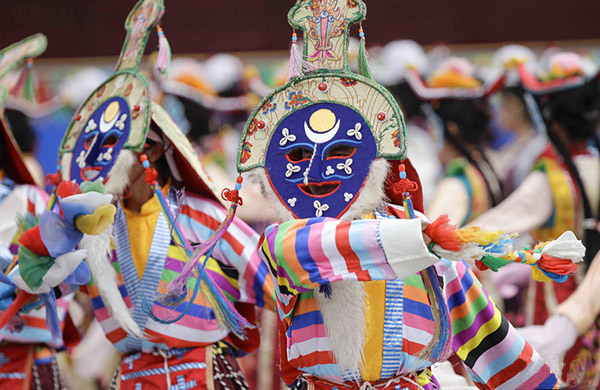
In the eighth century, during the reign of Chisong Dezan, after the completion of Sangye Temple, the eminent monk Lianhuasheng invited from Tianzhu, according to Buddha Sakyamuni's doctrine of the four Buddhist tantrums (ministry, ministry, yoga department, supreme yoga department), the yoga department and the king kong dance section in the supreme yoga department, organized the dance of gods, exorciled ghosts and rewarded gods, and opened light to the temple. Lian Huasheng's biography said: "After the translation of the scriptures in the Sangye Temple 'Cishizhou, 'the elders held the scriptures around the 'Wuzi' Hall for three weeks, lined up, put on masks, drummed and danced, and opened the light for the translated classics. It has been followed since then. This is the origin of the Tibetan monasteries jumping gods.
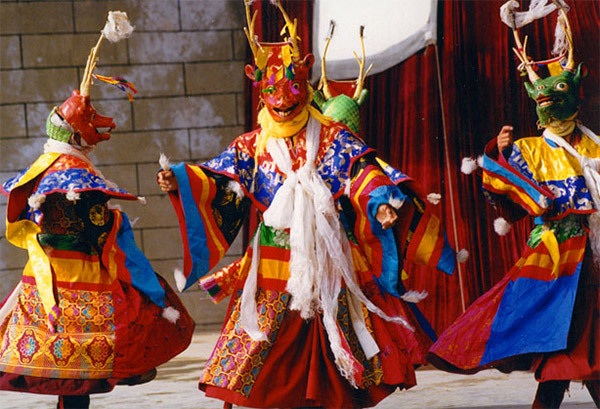
On the contrary, Tibetan opera is a comprehensive performing art in the form of folk songs and dances to express the content of the story. Since the 15th century, Tang Dongjebu, a monk of the Kagyu sect, has been determined to build bridges in various rivers in the snowy region for the benefit of all living beings. He took great pains to raise funds for the bridge. Although more than three years of efforts have not yet succeeded. Later, he found that among the devout believers, there were seven sisters who were born handsome and intelligent and good at singing and dancing, so he called in to form a troupe. With Buddhist stories as the content, he wrote and directed a song and dance drama with a simple story plot, and performed in various places to guide people and raise funds. This is the prototype of Tibetan opera. For this reason, people regard Tang Dongjeb as the ancestor of Tibetan opera; and because Tibetan opera was originally performed by the beautiful and fairy-like seven sisters, people also called Tibetan opera "Ajram". "Aji", Tibetan for elder sister or female; "Ram", meaning fairy. Of course, after the processing, enrichment, enrichment and improvement of many folk artists, Tibetan opera is no longer the original appearance. However, I am afraid that Tibetan opera has really formed its own set of art forms after the 17th century.
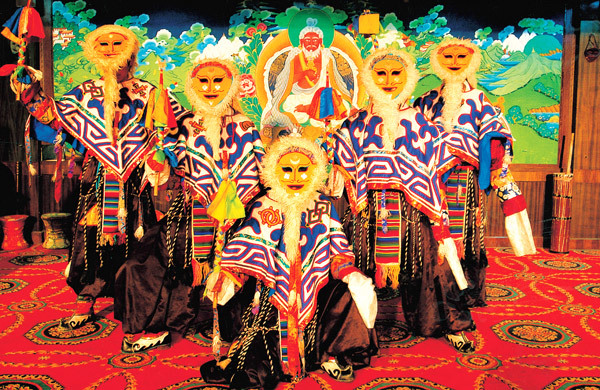
Tibetan folk drama troupes are very common. You can see the square in the countryside anytime and anywhere, or set up big tents, or pull big canvases, even without any cover (not to mention any scenery and curtain), Tibetan opera troupes perform on the spot, and the masses around ten miles will come to watch, often surrounded by water. In modern history, due to the many performances of amateur and spontaneous troupes in various places, they gradually formed their own characteristics and styles, thus forming different genres. Before liberation, the famous Tibetan theater troupes in Tibet were: Jianggar in Gyangze, Xiangba in Nanmusin, Juemulong in Lhasa and Jiongba in Aung Jen. Nowadays, amateur Tibetan opera troupes are very common. In some places, almost every club has organized a troupe. For example, in Mozhugangka County on the outskirts of Lhasa, there are about 20 amateur Tibetan opera troupes.
Genre: Before liberation, during the Snowdon Festival, Tibetan opera troupes from all over the country had to come to Lhasa to support them and present plays for the Dalai Lama and local government officials. These Tibetan troupes, which have come to support them, have become the backbone of amateur troupes everywhere. Due to the differences in history, geography, language, style and attainments, the troupes in various regions have formed schools with different styles. Among these schools, there are the white mask school belonging to the old school, the new school belonging to the blue mask, and the one-man show. It belongs to the old school of white masks, including Bingdonba of poor knot, Langzewa of Duilong Deqing, Zhaxi Sepa of Nedong, etc. Because the old school wore white masks, it was called white mask school. Their opera movements and singing are relatively simple, less influential.
The new school is the four major troupes of Jiongba, Janggar, Jumulong and Xiangba. At the beginning of their performance, actors wearing blue masks appeared, so they are called the Blue Mask School. The new school of performing arts has made great progress and has a great influence. It has gradually replaced the old school.
Program: Tibetan opera has gradually formed a relatively fixed program in hundreds of years of performance practice. The performances of Tibetan opera are generally square operas, and a few have stage performances. During the performance, the makeup is relatively simple. Apart from wearing a mask, the other is ordinary vermicelli and red grease, and there is no complicated facial makeup. Instruments are also simpler. The percussion music has only one drum and one cymbal, and a person at the performance uses an allegro to brief the audience on the development of the plot. There are few people in the play, and the actors sing intently. Because of the square performance, the actors' singing voice is loud and clear, and there are many drags, showing a rough and powerful character. The backstage usually has a helping voice, and the form is similar to that of Sichuan opera.
There are many singing tunes in Tibetan opera, which are roughly divided into long tunes that express joy. In Tibetan, it is called "party benevolence". The sad tone that expresses pain and sorrow is called "juolu" in Tibetan. The short tone that expresses the narrative is called "party unification" in Tibetan. Martial arts, dance and skills are also widely used in Tibetan opera performances. Usually after singing a paragraph, there will be a dance. There are many dance moves, such as mountain climbing, sailing, flying into the sky, entering the sea, riding horses, fighting demons, catching demons, worshiping Buddha, etc., all of which have certain dance moves.

The performance time of Tibetan opera can be long or short, some for a few hours, some for 1. two days, and even for a few days in the past. If you want to play long, you should sing carefully. If you want to play short, you should use backstage allegro to tell the story and jump over it at once. Generally, each Tibetan opera can be divided into three parts: first, "Wimbatton", which means that the hunter cleans the ground, that is, dressed in a hunter's costume and holding colored arrows, appears first, cleans the ground and sings a blessing. The second is the "Garuchin batch", that is, the prince's blessing. It is the appearance of the prince in costume, symbolizing the blessing of the stage and bringing blessings to the audience. Finally, there is "Ramduga", the fairy song and dance. It is the fairy woman who slowly dances, indicating that the fairy descended to earth and shared joy with the world. This is the prelude to the opening of the Tibetan opera. The second is "male", that is, the main play. The third is "Tashi", that is, the farewell blessing ceremony. The past troupes performed here to collect donations from the audience through collective singing and dancing.
Repertoire: There are many traditional repertoire of Tibetan opera, but in the 2. 300 years of creation and performance practice, some have been eliminated, and some have been re-created and refined and retained. At present, there are eight main repertoires of Tibetan opera: "Wencheng Official Document and Nepalese Official Document", "Langsa Weibang", "Suji Nyima", "Zhuowasam", "King Northam", "Baima Wenba", "Dunyue Dunzhu", "Chimei Gundan". Of course, there are other plays, but these eight plays are only the ones that most troupes have performed and are recognized as retained.
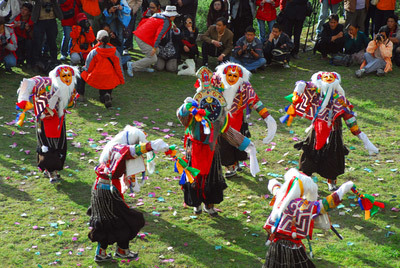
Characteristics of Tibetan Opera
The performance of Tibetan opera is divided into three parts: the opening ceremony play "Arova", the main play "Xiong" and the auspicious ending ceremony "Tashi". The opening ceremony, also known as "Weimbaton" or "Jialuwumba", is mainly about the net sacrifice, praying for gods to exorcise evil spirits, praying for blessings, and introducing the plot. The characters on the stage are generally: Jialu, Wemba and Ram. Legend has it that these three characters are based on the characters in the play Lausanne. Khalu is a prince, Wemba is a fisherman or hunter, and Ram is a fairy. During the performance, Wemba wore a mask and sang and danced. Then Jialu led a group of fairies to sing and dance to introduce the actors, explain the plot of the drama and attract the audience. "Xiong" is a real play. First, "Wembag Geng" (I. e. the dramatist) uses allegro to introduce the plot, location, environment, character modeling, lyrics, etc., and then the characters come on stage. The performance time is three days and three nights, or even six or seven days; the short time is two or three hours, all controlled by the theater master. The performance form is: all the actors, whether or not they play the roles in the play, all appear in a half circle. When it is their turn to perform, they will be on the stage and participate in the backing singing and dancing the rest of the time. The basic performance format is: first, the dramatist introduces a plot, then a character sings a section, and then all the actors dance together or perform skills, and then follow this cycle. The performance is not divided into scenes and sessions, and the storyteller and the accompaniment dance actually play the role of scene separation. Since traditional repertoires are generally classics that have been passed down for hundreds or even hundreds of years, most audiences are familiar with the characters and storylines in the play. They watch the performance mainly to appreciate the singing, dancing and stunts in the play. Due to the development of the plot, the characters in the play can concentrate on singing or performing stunts. Through the ingenious arrangement of the dramatist, an exquisite art form with a moving story, beautiful singing, and exciting stunt performances, and accompanied by actors on the same stage, is displayed in front of the audience. "Tashi" is a collective song and dance at the end of a Tibetan opera performance, meaning to wish good luck.
In the process of development, Tibetan opera has absorbed many kinds of performing arts from ancient to modern times, exaggerated, refined, and gradually typed and dramatized, forming an art form with a unique Tibetan local national opera performance style. The performances of Tibetan opera include "singing, dancing, rhyme, whiteness, watch, skill, and harmony.
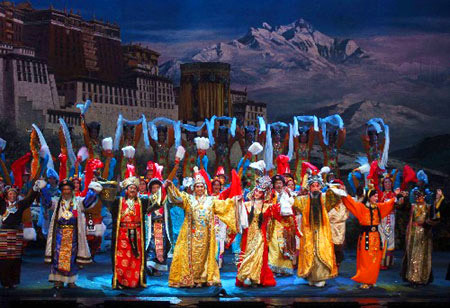
下一条
下一条
最新动态
2022-08-23
The current outbreak, the responsibility is on the shoulder, Balagzon in action!
Since the outbreak of the epidemic in Tibet on August 7, 2022, a large number of tourists from Tibet to Yunnan have entered Shangri-La from National Highway 214. The People's Government of Diqing Prefecture has issued a series of relevant policies and measures and actively responded. Medical staff, police and other front-line personnel stick to the front line, have been involved in the "war of resistance" of the epidemic without gunpowder smoke, and jointly participate in dealing with a major public health security incident faced by mankind.



